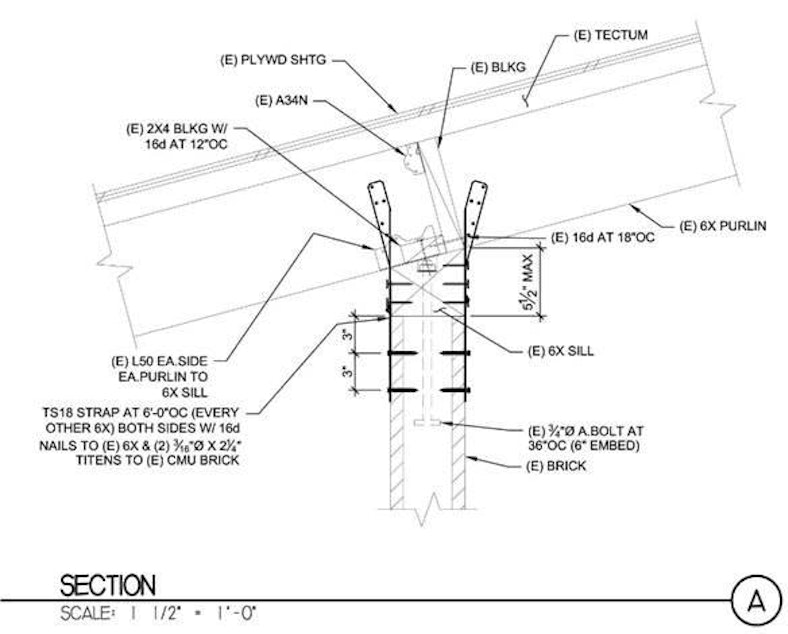Big One would kill or maim 'hundreds or thousands of school kids'
If the Big One hits on a school day, “hundreds or thousands of school kids will be killed or maimed,” said state Rep. Gary Pollet, a Seattle Democrat.
And yet, Washington lawmakers have done little to prepare older school buildings for the inevitable, Pollet said.
Shyam Vijayaraghavan had asked KUOW's Sound Qs if Washington state schools are ready for a big earthquake. Well, Shyam, the news is not good.
Washington is far behind California, Oregon and British Columbia. Those West Coast neighbors have created standards for fixing up older school buildings.
Washington lawmakers have refused to set similar standards or make a plan, Pollet said.
That’s even though the chance of a megaquake (9.0 or above) happening on what's called the Cascadia Subduction Zone over the next 50 years is more than 1 in 10, and the odds of a smaller, but still devastating earthquake over that same period are even higher.

The state is just now taking a small step to catch up.
Last year, lawmakers earmarked over $1 million to start seismic evaluations of 220 schools, with an eye to eventually making those buildings more earthquake ready. The Department of Natural Resources is leading the effort, occurring this summer. It's expected to be completed in 2019.
According to the department, the risk of death and injury is real.
In Washington state, 200 schools are within one mile of a known, active fault trace; 214 schools are in zones at high risk of liquefaction during an earthquake; and 72 percent of schools are within a high-to-very-high seismic hazard zone.
Schools built after 2005 are in better shape. But anything built before that year — nearly 90 percent of buildings in this state – was not originally built to the current seismic code.
One of biggest risks comes from older brick school buildings that rely on unreinforced masonry, known in the biz as URMs.
“The brick is stacked with mortar, and there's no reinforcing steel in the wall,” explained Nancy Devine, senior structural plans engineer for the city's Department of Construction and Inspections.
Starting in 2015, Devine was tasked with tracking how many buildings with unreinforced masonry are in Seattle.
She counted 1,144, which contain around 33,000 people that live or work in these older buildings. Twenty-eight contain private schools, and 22 house public schools.

These older buildings are fragile compared to modern structures, but they can be made stronger through major retrofits that will deal with “most of the seismic deficiencies,” Devine said.
An earthquake advisory committee has twice recommended that Seattle require mandatory retrofits to a standard they call "bolts plus." Devine said the committee studied the earthquake that occurred in Christchurch, New Zealand, in 2011 as a model for what could happen here.
The proposed city standards would also apply to school buildings. The Seattle City Council has not acted.
Still, Seattle public schools are safer than schools elsewhere in Washington.
That’s because Seattle voters approve property taxes for education. Seattle Public Schools told KUOW that 100 percent of its buildings have had some retrofitting. The most recent school levy tagged$700 million for building upgrades, including seismic improvements through 2020.
Upgrades are underway this summer at several Seattle schools, including Dearborn Park International Elementary on Beacon Hill, built in 1971.
A 2009 seismic report included this line about the risks to Dearbon in case of an earthquake: “There is potential for the roof to separate from the walls, if not adequately anchored."
The work includes strengthening connections inside and out between the roof and the walls with metal straps, in case an earthquake strikes.

Compare the upgrades at Dearborn to Catharine Blaine (K-8), where the seismic report included the same concern about the building shaking apart in a major earthquake.
But retrofit work for Blaine is not scheduled until summer 2019. Nearly 10 other schools are on next year's seismic retrofit list.
Other Seattle schools, including Alki Elementary, are for now on the back burner, waiting for voters to pass a levy scheduled for 2019. The school board will vote this fall on which schools to add to the retrofit list.
If you are a curious, you can find seismic reports for each school on the 2009 report, but those reports and recommendations don't include upgrades that have occurred since 2009.
Beyond Seattle, the problem is more dire.
In Port Angeles, for example, vulnerable buildings have not been retrofitted. Voters turned down plans in 2015 and 2017 to modernize schools.
What’s the fix for a district like Port Angeles?
Pollet said to start, it’s clear “that every school building has to have a seismic evaluation, and when we do a renovation, it has to be brought up to code."
Pollet sponsored a bill to do that. It passed the house education committee, then died.
The obstacle is money.
"The big issue is fear over the price tag, and that fear is what is preventing us from making even a baby step commitment to say, even in 10 years we would have brought buildings up to speed," Pollet said.
By the time Washington decides to act, it may be too late for kids.




